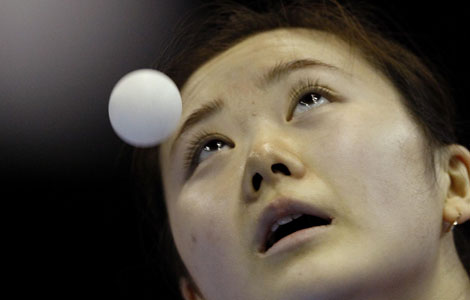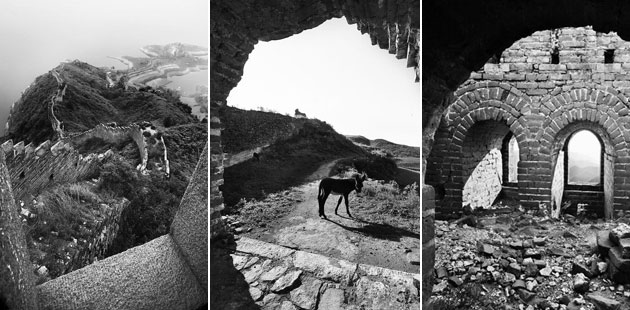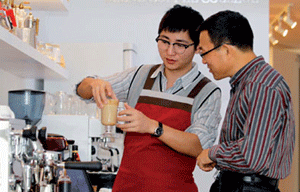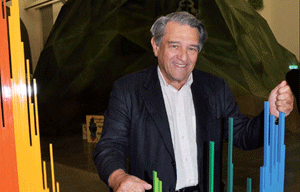Following the script
Updated: 2011-11-22 11:20
By Mu Qian (China Daily)
|
|||||||||
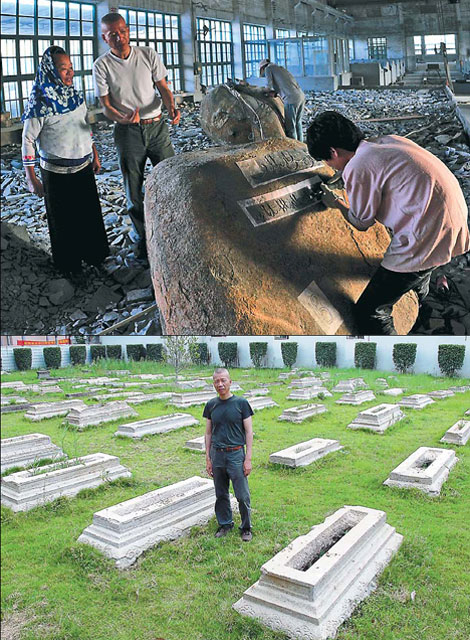 |
|
In the process of creating his latest installation work Homecoming, Cai Guoqiang visits a Muslim cemetery (above) in his hometown of Quanzhou, Fujian province, and works with local craftsmen. Photos provided to China Daily |
Cai Guoqiang's latest exhibition, in Doha, underlines the connections between China and the Arab world. Mu Qian reports.
As a youngster, the artist and curator Cai Guoqiang (Cai Guo-Qiang) used to spend time at a cemetery in his hometown Quanzhou, Fujian province, because he was curious about the scripts on tombstones in a language that he did not understand. He learned later those words were written in Arabic and were epitaphs of the many Arabs who have lived in the city for more than 1,000 years. Now, those inscriptions will become part of the 54-year-old artist's works to be exhibited in Doha, Qatar.
Cai's exhibition Saraab ("mirage" in Arabic) will be on view from Dec 5, 2011, to May 26, 2012, at the Arab Museum of Modern Art in Doha. It will comprise new works that explore the connections between China and the Arab world.
When visitors to the exhibition enter the museum, they will walk among 60 rocks that Cai has carved with excerpts from the Quran and sayings of the prophet Muhammad from the Muslim tombstones in Quanzhou. All the boulders for this installation work, titled Homecoming, come from Quanzhou and are being shipped to Doha.
"It is a homecoming journey for the Muslims who traveled to China many centuries ago. It is also a homecoming journey for myself, as I traveled to my hometown to find something from my own background to create works for this exhibition," Cai says.
Quanzhou, on the southeast coast of China, was a significant maritime port on the ancient Silk Road and a trade hub for goods, such as silk, porcelain, tea and spices.
Traders from the Arab region, as well as other parts of the world, have lived in Quanzhou since the Tang Dynasty (AD 618-907). They brought not only goods, but also religious beliefs, such as Islam, Buddhism, Taoism, Christianity and Manicheism, all of which left their traces in the city.
"My world view has very much been shaped by the multicultural environment of Quanzhou, so I am well adapted to the various cultures I find when I work around the world as an artist," says Cai, who was an honoree at the recent Multicultural Benefit of the Metropolitan Museum of Art in New York.
Traces of Islam can still be found in today's Quanzhou, such as China's oldest mosque, Ashab Mosque, decorative elements on residential buildings and the habit of local women to wear scarves, Cai notes.
In the process of creating the installation work, Homecoming, Cai studied many scripts from Quanzhou's Muslim tombstones, and was particularly impressed with one that reads: "He who dies away from home is like a martyr."
"Those Muslims settled down in Quanzhou and lived there for generations, yet at the end of their lives they realized they were dying away from their homes. For me, as a person who has been traveling around the world, it is not difficult to empathize with their emotions toward home," Cai says.
"That's why I wanted to create this work about a homecoming journey."
Trained in stage design at the Shanghai Theater Academy, Cai moved to Japan in 1986, and then to the United States in 1995.
His works include Venice's Rent Collection Courtyard, a recreation based on a famous socialist realistic work from 1960s China, which was shown at the Venice Biennale in 1999; and the fireworks for the Opening Ceremony of the 2008 Beijing Olympic Games. In 2008, Cai's large-scale mid-career retrospective was held at the Solomon R. Guggenheim Museum in New York.
Wassan Al-Khudhairi, director of the Arab Museum of Modern Art, believes audiences in Doha will be intrigued by Cai's works.
"To see someone from China using Arabic scripts and calligraphy in different forms is going to be a surprise to a lot of people, because I don't think people in the Arab world are so aware of their connections to China."
Saraab has more than 50 works, including 16 newly commissioned pieces, and will showcase Cai's diverse body of work, including early paintings, gunpowder drawings and installations.
Cai will also stage a large-scale daytime explosion event titled Black Ceremony for the opening of the exhibition.
When Cai was preparing for the exhibition, he traveled to Doha twice. He says the city stands between the desert and sea and looks like a mirage, a phenomenon that is common in the area.
"Looking at the fast-emerging skyscrapers in Doha, a scene that can also be seen in China, I suddenly had an unreal feeling," Cai says, explaining the title of his exhibition "mirage".
Cai will work with local volunteers to produce a number of new gunpowder drawings for the exhibition to showcase his approach to contemporary art. Documentary videos of this creative process and Cai's preparatory sketches for the exhibition will also be exhibited in Saraab.
Some featured past works of Cai directly link to the newly commissioned pieces, such the documentation of Bringing to Venice What Marco Polo Forgot (1995), a performance and installation piece at the 46th Venice Biennale of a wooden fishing boat from Quanzhou carrying Chinese herbs and ginseng.
Other works include Footprints of History: Fireworks Project for the Opening Ceremony of the 2008 Beijing Olympic Games, and Man, Eagle and Eye in the Sky, a social art project of painted kites flown in the Sahara Desert that mobilized the local population's participation.
Cai Guo-Qiang: Saraab will be the first solo exhibition at the Arab Museum of Modern Art, which opened in 2010 with the aim of offering an Arab perspective on modern and contemporary art.
A bilingual Arabic-English catalogue will accompany the exhibition, featuring conversations between Cai and scholars on Sino-Arab history and an overview of regional art historical dynamics.
"The Arab Museum of Modern Art seeks to shift perceptions and understanding of both Arab art and the larger context of modern and contemporary art from an Arab perspective, and Saraab is a wonderful opportunity to show the world the potential of this idea," the museum's director Al-Khudhairi says.
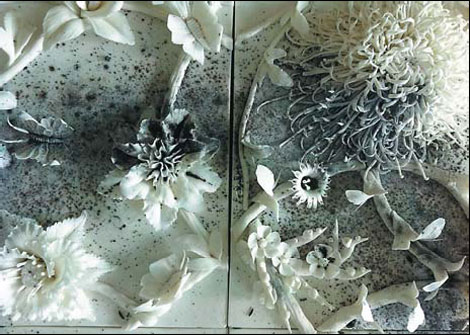 |
|
Detail of Cai's installation Fragile in production, to be exhibited at Arab Museum of Modern Art. Photos provided to China Daily |
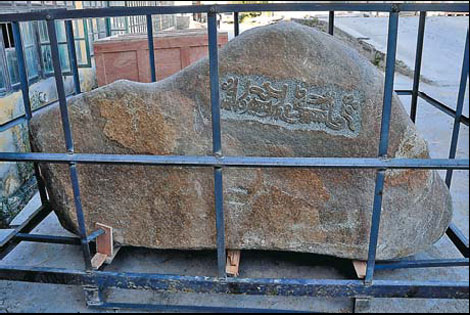 |
|
A boulder, carved with excerpts from the Quran, waits to be shipped to the upcoming exhibition in Doha, Qatar. Photos provided to China Daily |


